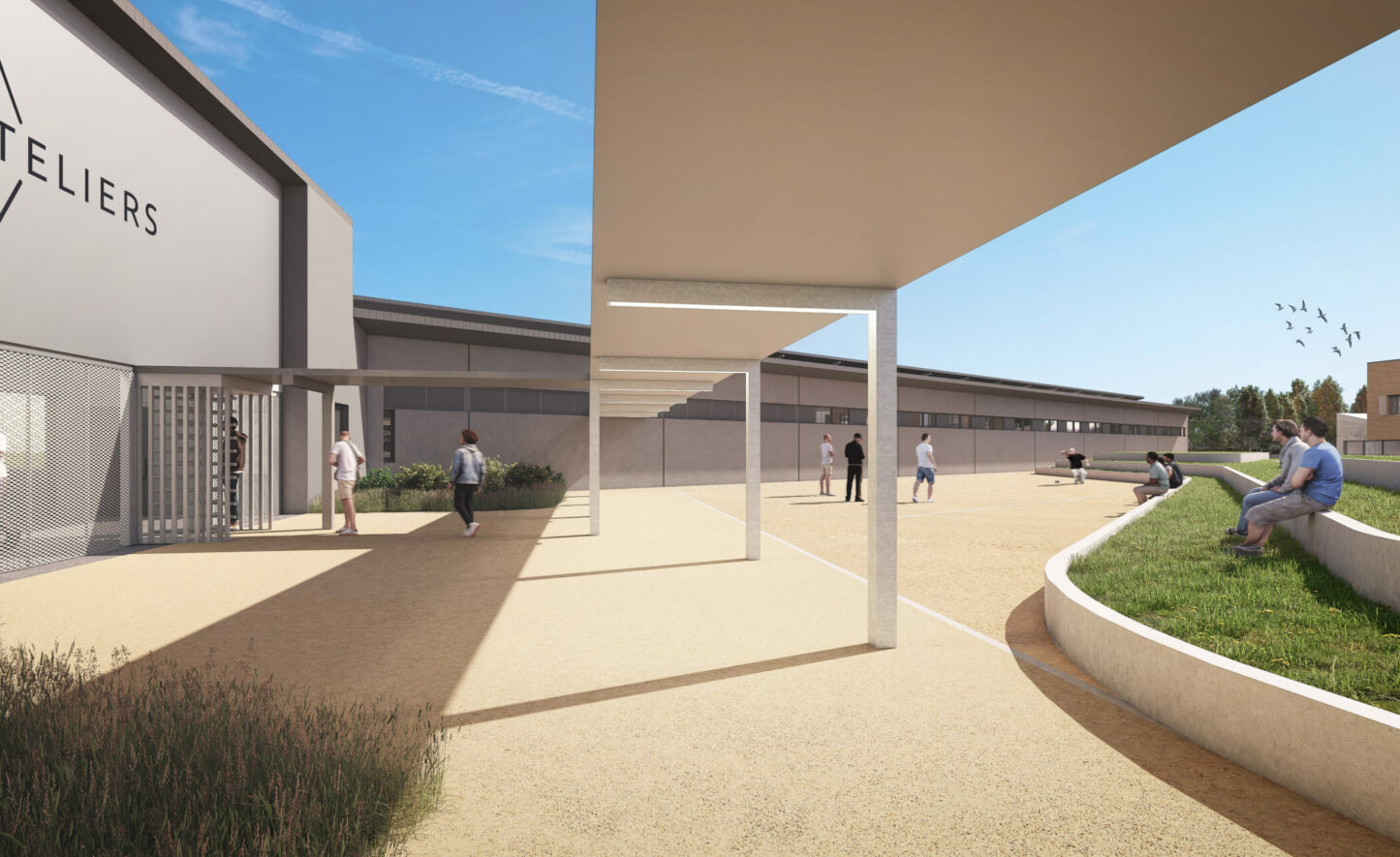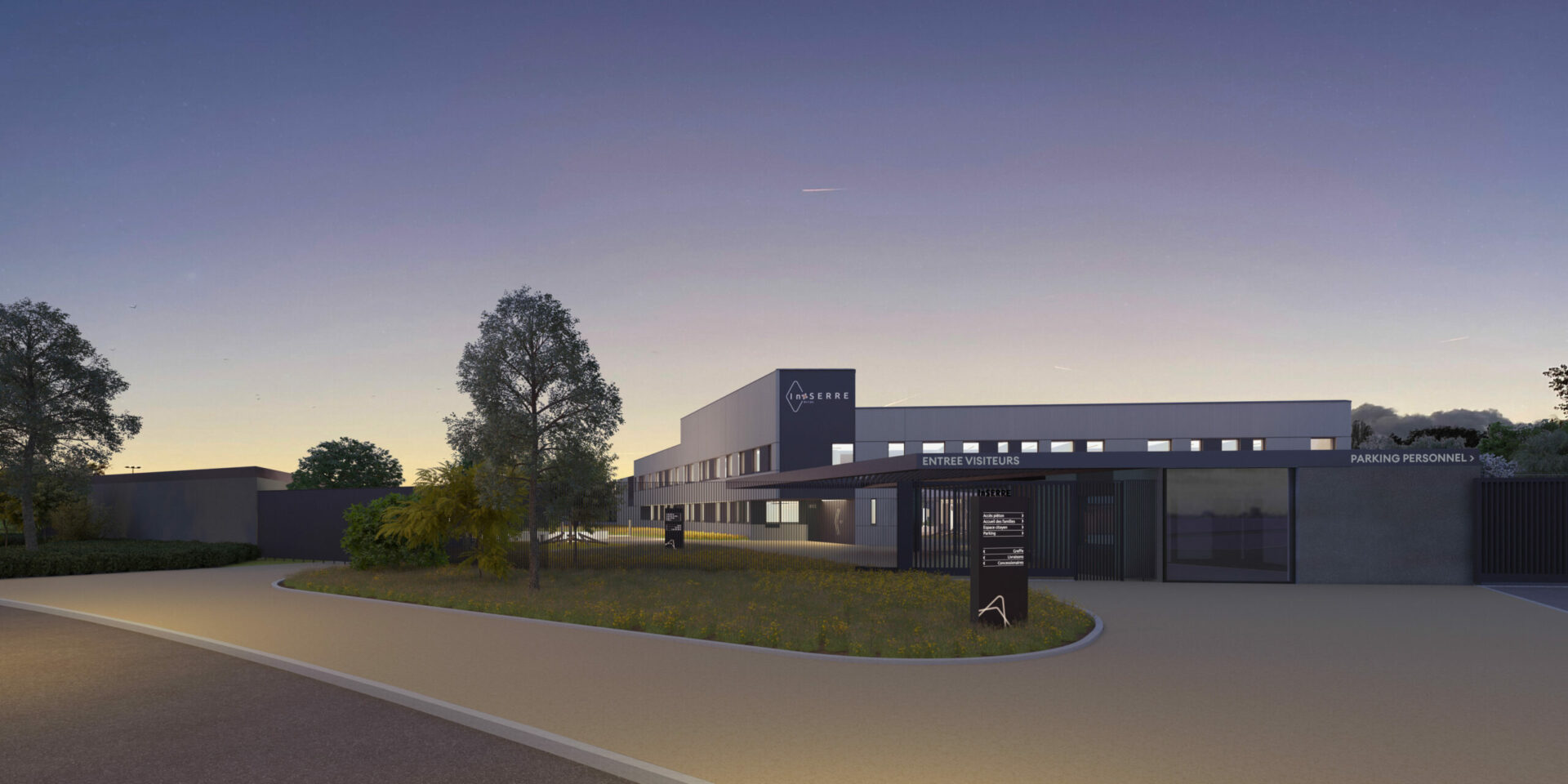a space for reclaiming a sense of freedom through the learning of trades
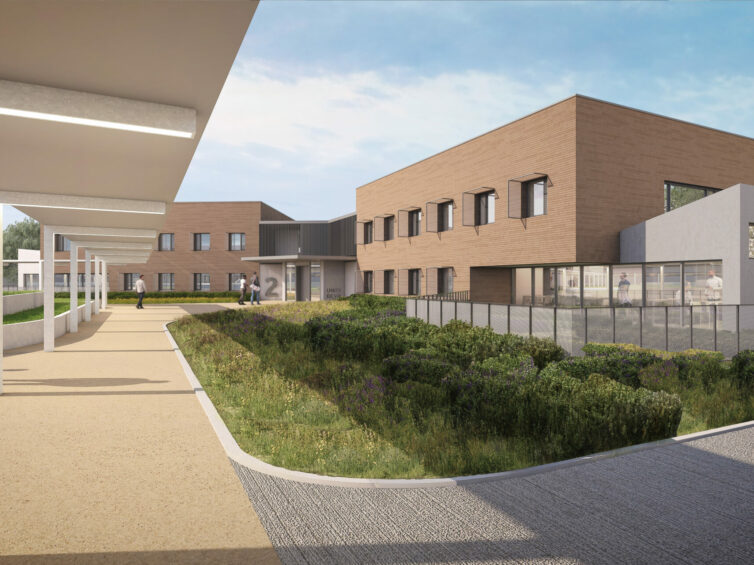
a space for reclaiming a sense of freedom through the learning of trades

The architectural design of InSERRE (Innovate through Experimental Structures for Responsibility and Reintegration through Employment) is a cohesive whole; it represents the synthesis between experimental challenges of programmatic doctrine and the functional and security constraints inherent to this type of facility.
Our focus has been on 3 main axes:
• creating a facility that enables inmates to reclaim a sense of freedom through vocational training
• executing a discreet operation at the entrance of the city
• maintaining a constant concern for the safety & quality of life of the staf
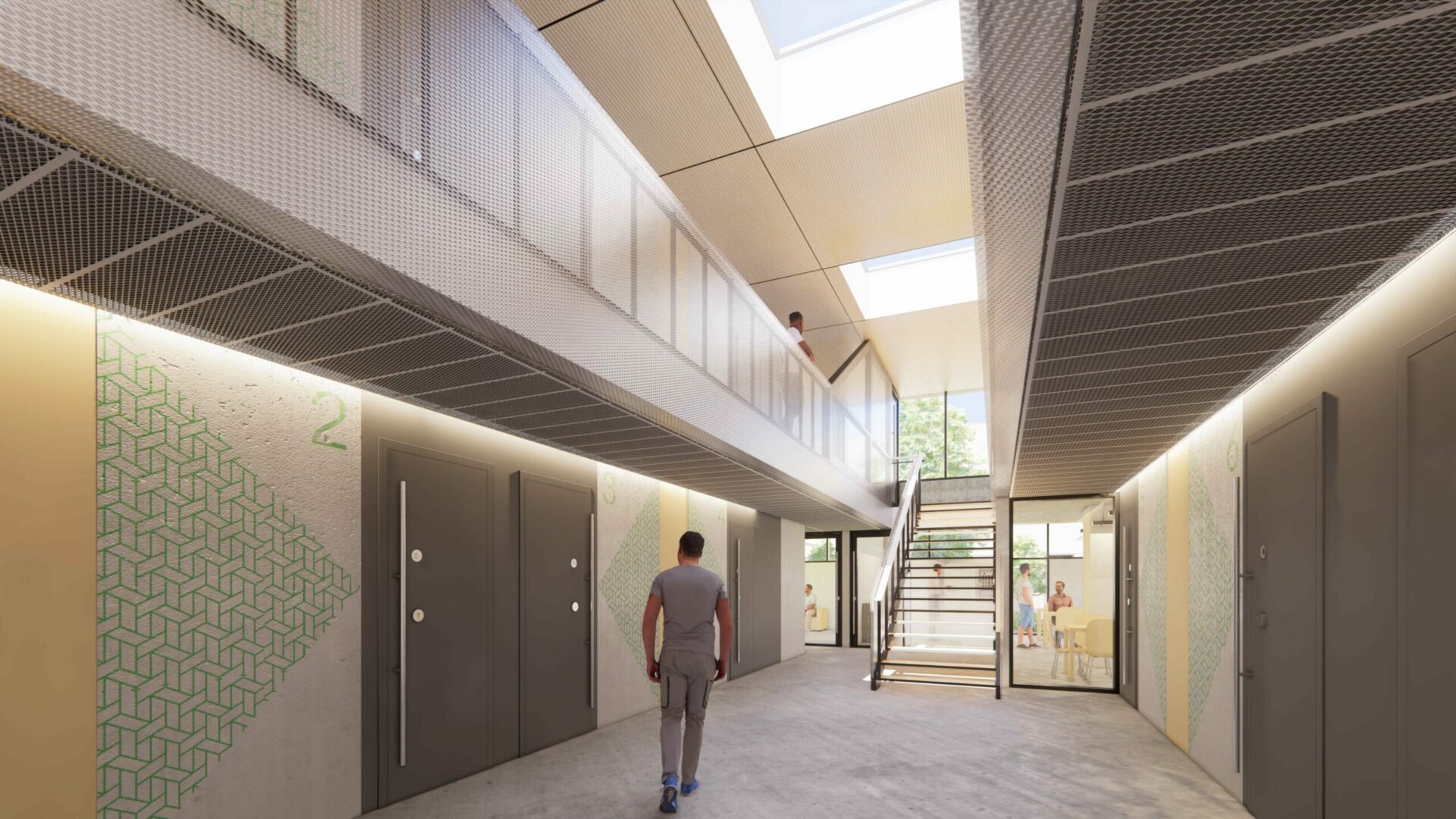
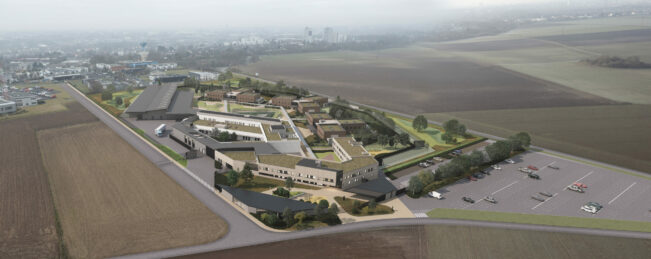
| program | design & construction of an experimental INSERRE-type penitentiary facility with a capacity of 190 places, focused on education & employment through collaboration with local businesses & territorial authorities |
| client | public agency for justice real estate (APIJ) |
| address | chemin de Bailleul • Saint-Laurent-Blangy |
| building type | live |
| status | competition |
| expertises | architectureinterior architecturelandscape design |
| offices | paris |
| size | 15.000 m² |
| team | • client: public agency for justice real estate (APIJ) • contractor: Denys • architect: assar architects • technical engineering: TPFI • signage: Ateliers 59 |
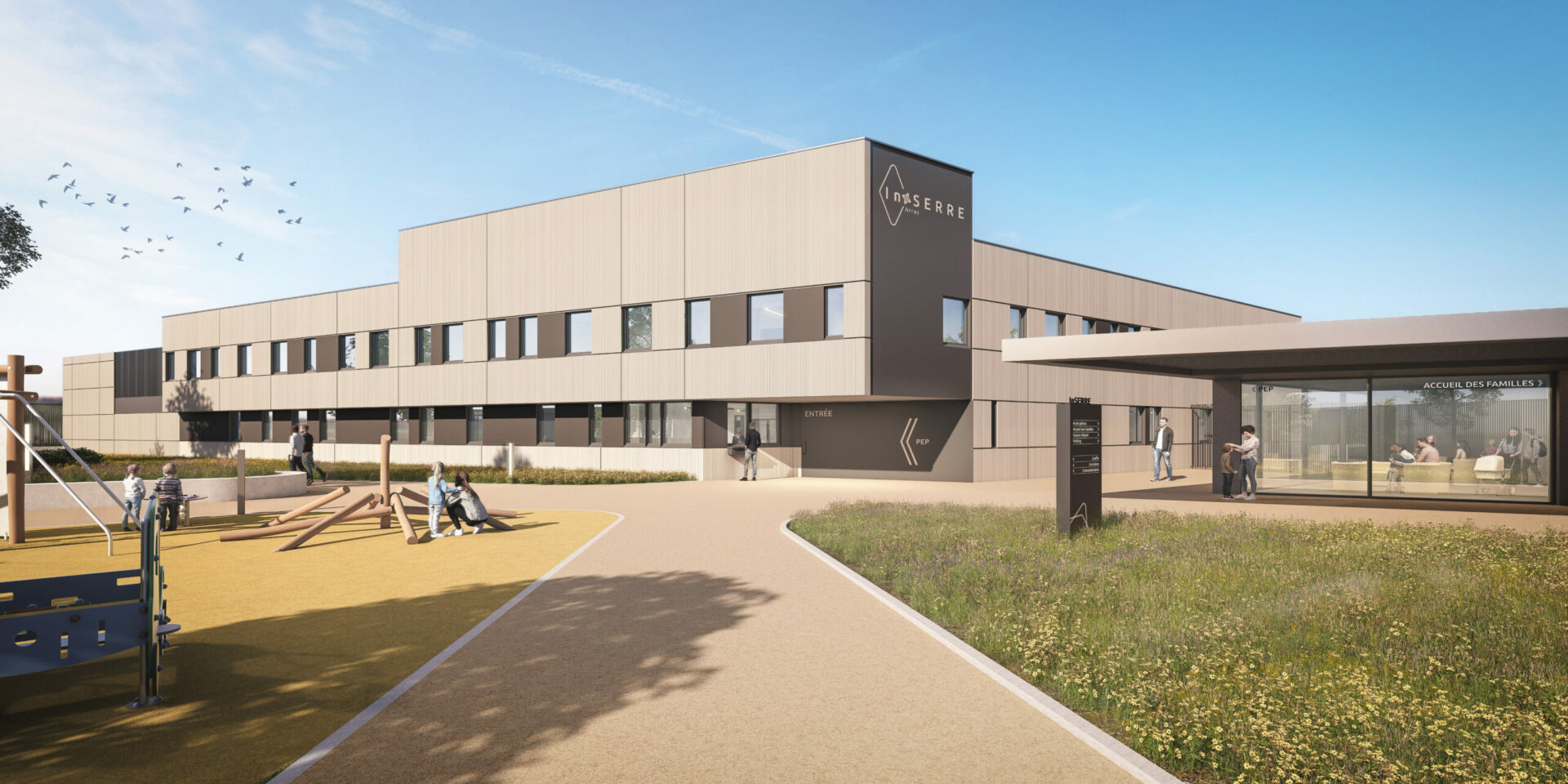
The project’s concept lies in the building’s form: a diamond shape that characterizes the INSERRE of ARRAS. For a seamless integration: the diamond creates vegetated open spaces at the four corners of the plot, making the facade lengths shorter and more discreet in the environment. The institution’s entrance plaza is arranged at one of the corners.
The interior form of the diamond shapes a large open space dedicated to the inmates—a space for free movement, activities, and relaxation, complementing the “open-door” regime that provides access to these autonomous zones.
The spatial and functional organization, resembling a “campus,” highlights education at the core of the facility. It underscores the purpose of enhancing the skills of the inmates to ensure their reintegration. This strong connection between workspaces and accommodations organized around the central space fosters a dialogue in a symbolic interaction.
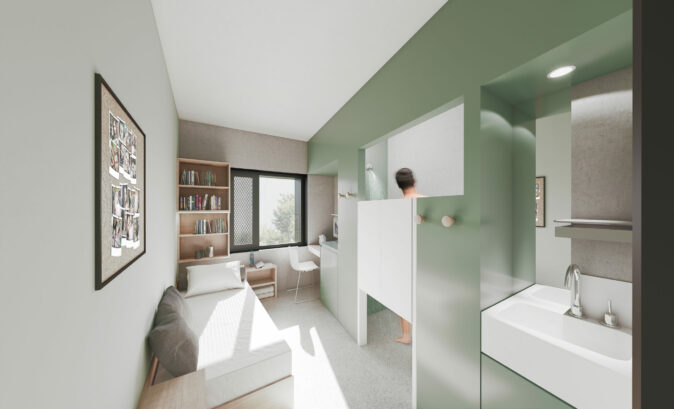
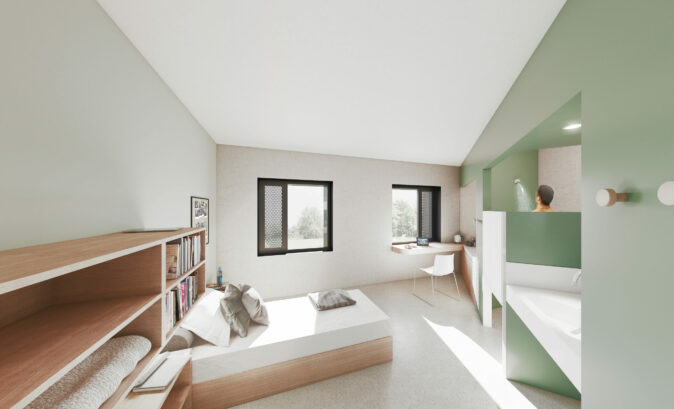
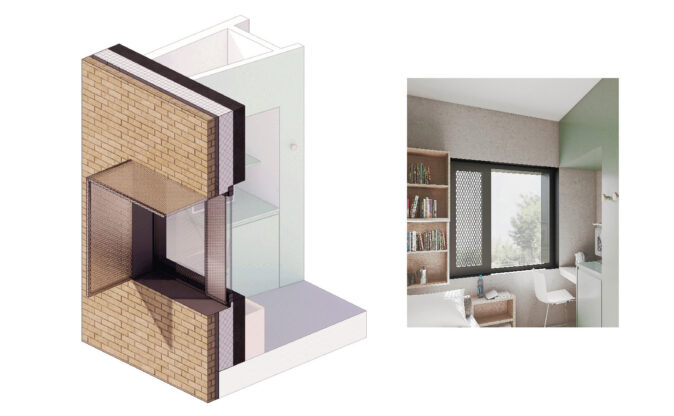
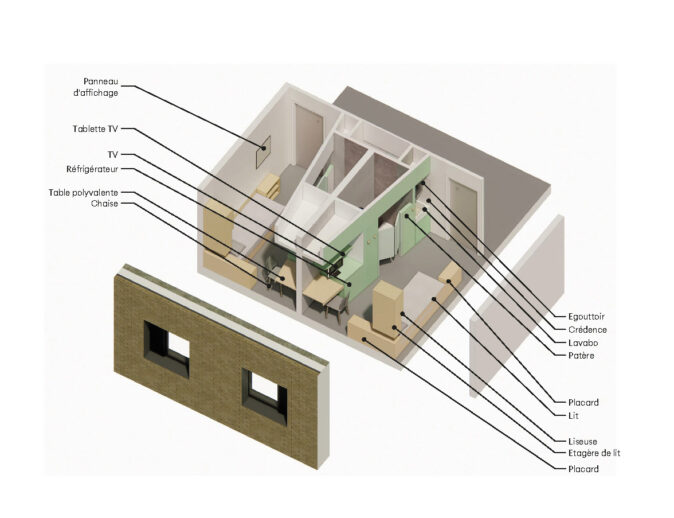
Life unfolds in a “dynamic” atmosphere, punctuated by daily tasks. The central space, visible from all sides, is also animated by self-managed activities, maintenance, and green initiatives.
The shape also implies simplicity in surveillance and management of the built enclosure in interface with the outside world. The green spaces, designed in terraced form, structure flows, limit gatherings, and encourage calmness and relaxation.
Pathways are straightforward and rational, with short routes. The social life of inmates is easily manageable, thereby soothing the working conditions of the penitentiary staff. Routes within the buildings are organized to ensure a stratification of controls for spaces in contact with external individuals.
